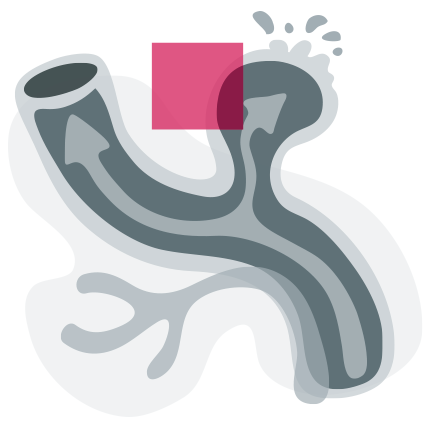Computational Fluid Dynamics
Harnessing the power of CFD to solve complex clinical problems.
Benefit from biofluid mechanics modelling that facilitates breakthroughs in personalized medicine.
Unlocking the power of AI-Enhanced CFD solutions for healthcare
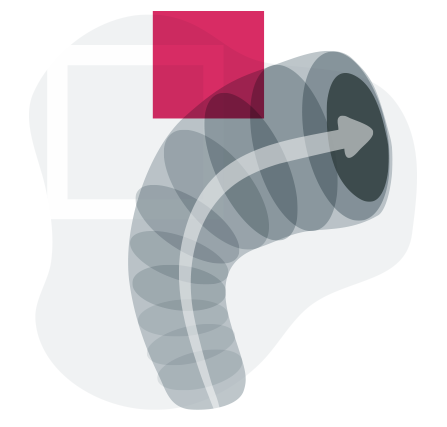

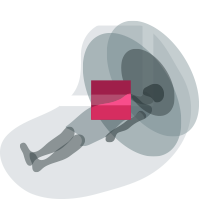
CFD in real-life physiologic geometries
Computational methods in the regulatory
The medical device’s performance
The computational fluid dynamics method (CFD) allows you to address extremely challenging and clinically relevant problems in real-life physiologic geometries. The hemodynamics of blood flow in the cardiovascular system is the area where CFD can be particularly used. Examples include coronary arteries (assessment of stenosis), aortic aneurysms, aneurysms of cerebral arteries and implanted medical devices (e.g. stents, stent grafts, left ventricular assist devices and artificial heart).
In the medical device or life science industries, the simulation may be used to provide additional digital information. Computational methods help reduce the time and cost required in the regulatory approval process since credible digital evidence has been accepted by the FDA.
This method can help you optimize designs and improve medical devices. Computations and simulations can predict the device’s performance before building it, resulting in better patient outcomes.
Selected works
AI-enhanced CFD assessment of CAD in CCTA
We tackled issues related to coronary artery disease diagnosis and monitoring and introduced an end-to-end deep learning-powered pipeline for automated analysis of coronary computed tomography angiography which additionally exploits computational fluid dynamics to capture the functional vessel characteristics. Our experiments, performed over clinically acquired scans, revealed that our segmentation approach (that takes advantage of centerlines instead of performing full manual segmentation) not only outperforms state-of-the-art nnU-Nets but also leads to the blood-flow parameters which are in substantial agreement with those elaborated for the ground-truth delineations.
Here green streamlines are Ground Truth (GT), red: Centerlines (CL) straightened and blue is nnUnet. Flow is steady and driven by the same pressure. Blue streamline is significantly faster. We consider the coronary tree from the inlet to the points where the diameter is 1.5mm.

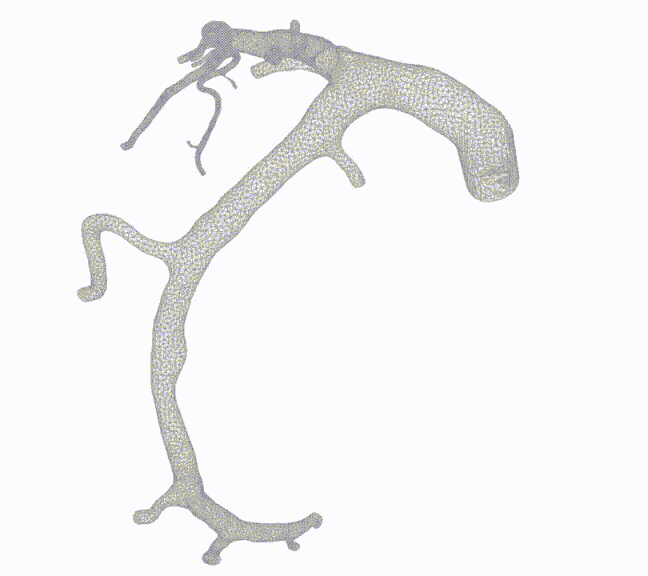
Computing hemodynamic parameters
Hemodynamic parameters such as velocity, pressure, vortices, wall shear stress can be computed during computer simulation and so on, and are considered for the characterization of the flow field. Results showed that the vortex location and inflow area depend strongly on even a subtle changes of vessel geometry.
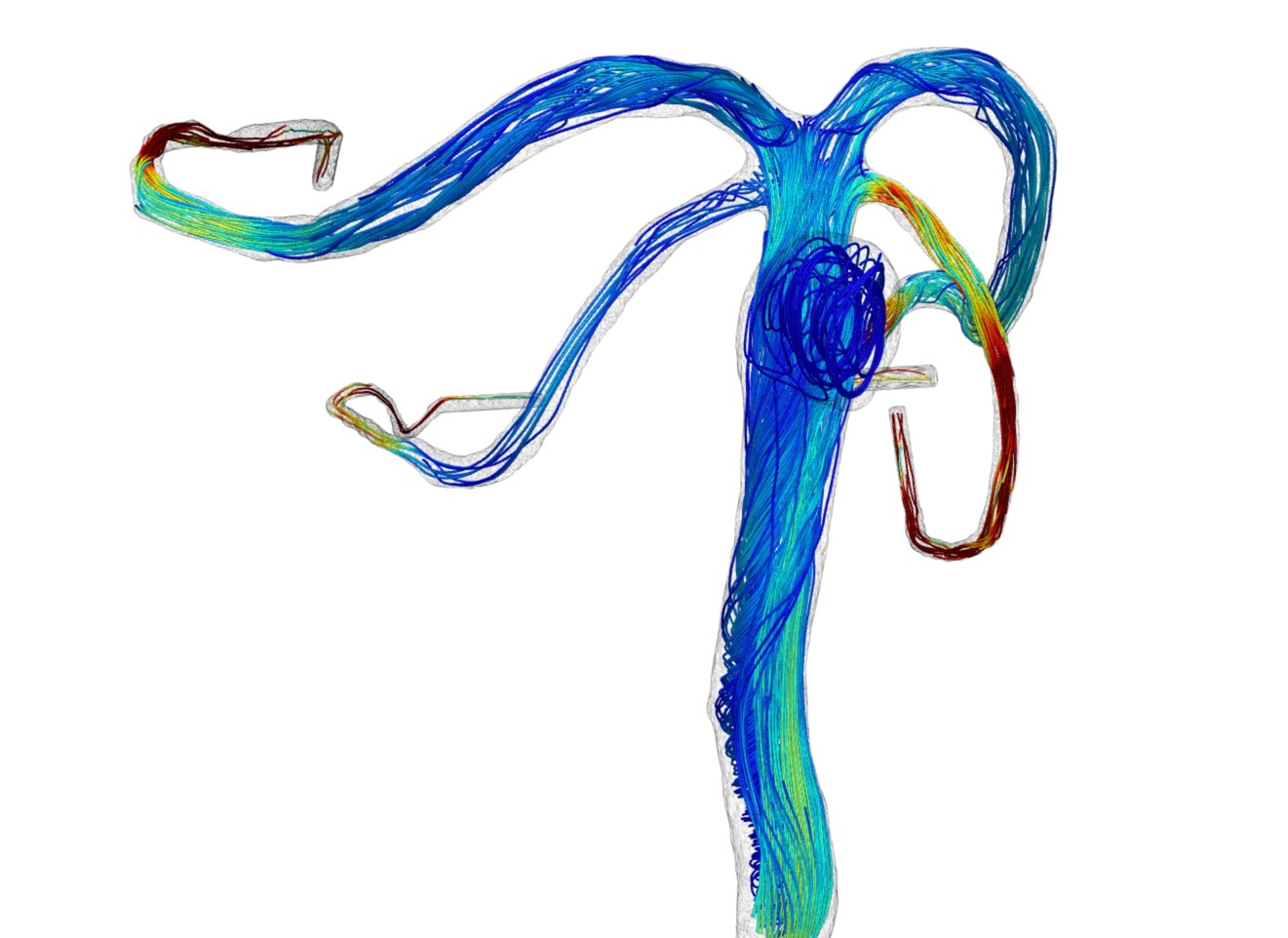
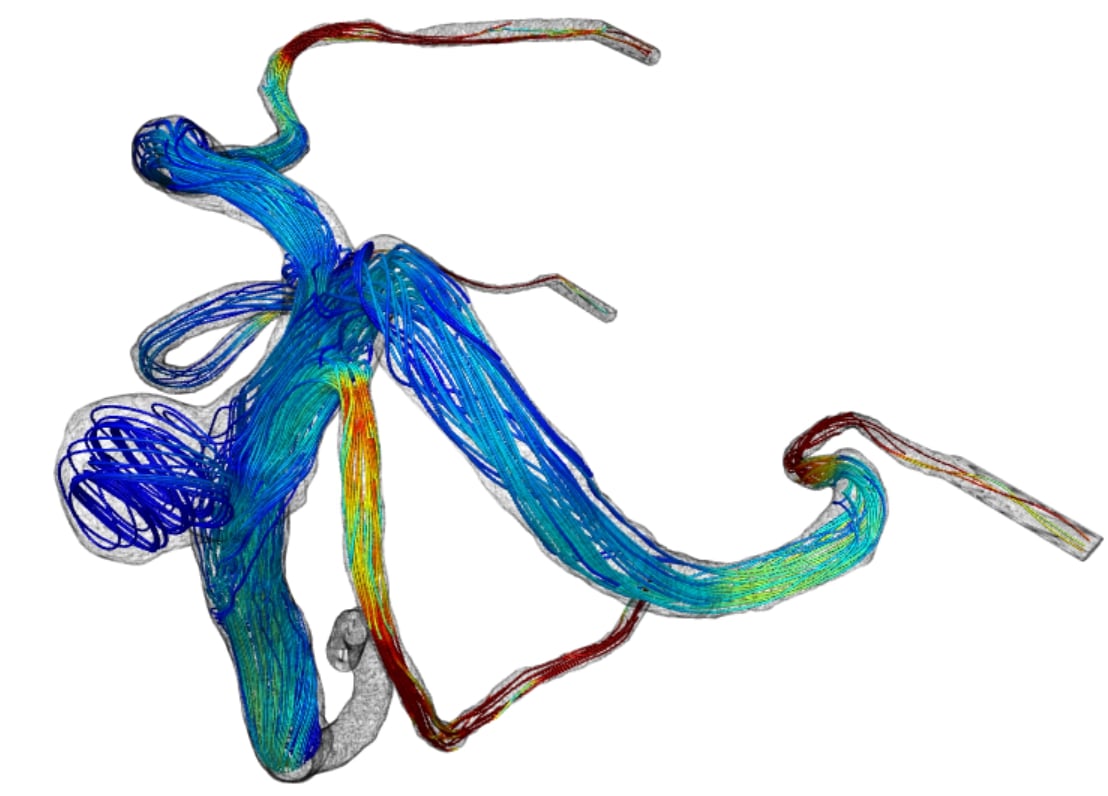
Blood flow simulation in cerebral aneurysm

Vortex structure reveals abnormal areas where flow detachment occurs
Why Graylight Imaging
We have published several CFD-related publications (Low-density lipoprotein accumulation within the right coronary artery walls for physiological and hypertension conditions, Modeling perfusion by fractal tree and stochastic dynamics, Deep Learning Meets Computational Fluid Dynamics to Assess CAD in CCTA). What’s more: our interdisciplinary team is actively involved in CFD projects. That is exactly why we truly combine practical experience with cutting-edge research.
The application of CFD in medicine requires a strong understanding of anatomical, physiological, physical and engineering principles. We have an interdisciplinary team onboard consisting of engineers, computer scientists, medical professionals and physicists ready to conquer your challenges.
We follow best practices, verification and validation guidelines (VVUQ, ASME, FDA) to ensure accuracy and credibility as well as compliance needed for the formal approval process if required.
Learn more about our competences


